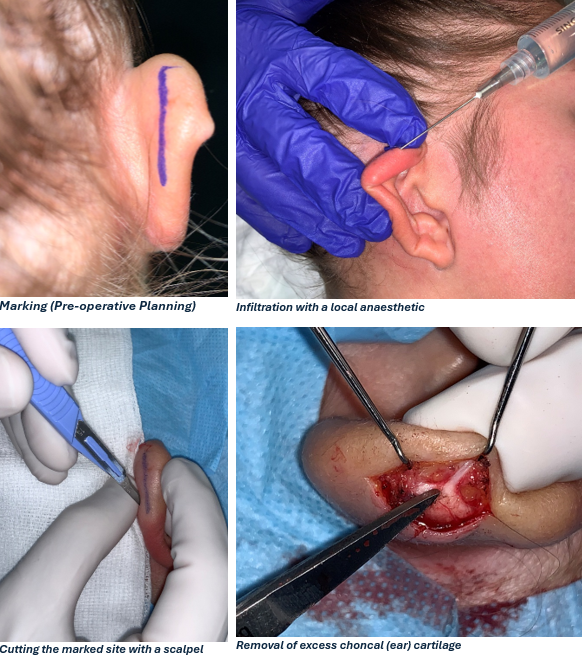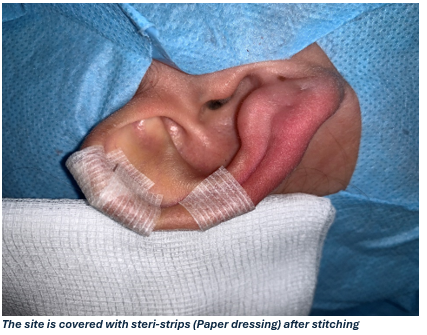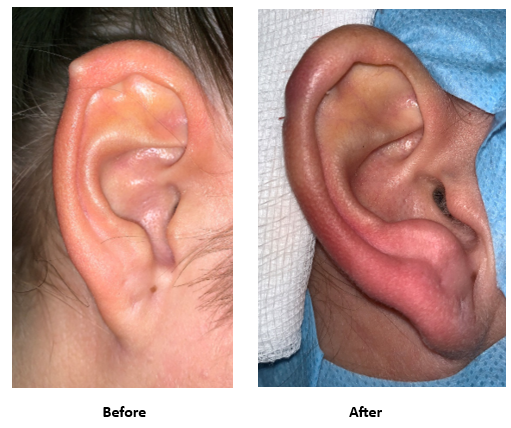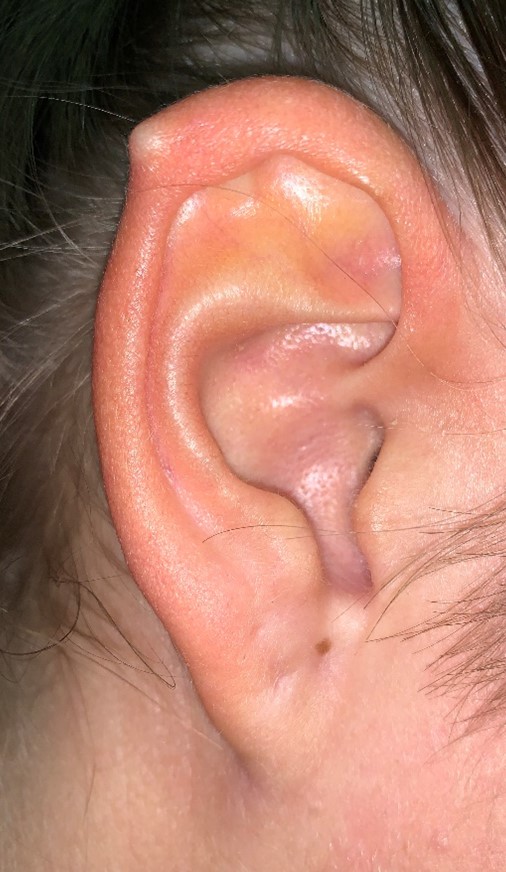The shape and structure of our ears vary widely from person to person. While most people don’t give much thought to minor ear variations, some individuals find certain features less appealing and may seek cosmetic correction. Darwin’s tubercle, a small bump on the outer rim of the ear, is one such feature that patients often request to be corrected for aesthetic reasons. The Darwin’s tubercle could be a small fold excess skin with or without excess ear cartilage underneath.
- What Is Darwin’s Tubercle?
Darwin’s tubercle is a small, pointed bump located on outer (helical) rim of the ear. This feature is typically harmless and has no functional impact on hearing or overall health. However, some individuals consider it as an undesirable cosmetic trait due to its unusual protrusion. Darwin’s tubercle is thought to be a vestigial trait, reflecting our evolutionary history, and is present in approximately 10% of the population.

- Historical Aspect of Darwin’s Tubercle
Darwin’s tubercle was first described by Charles Darwin in his 1871 work, “The Descent of Man”. Darwin noted that this bump on the helix might be a vestigial trait from our primate ancestors, who had more pointed, mobile ears. He suggested that this feature had no modern purpose but remained as a genetic remnant of earlier evolutionary stages.
Though the tubercle itself does not have functional implications, it has been a point of curiosity in evolutionary biology and anthropology, connecting human anatomy to our distant past.
3. Why Do Patients Seek Correction for Darwin’s Tubercle Deformity?
While Darwin’s tubercle is not a medical concern, patients may seek correction for several reasons:
- Aesthetic Dissatisfaction: Some individuals feel that the bump disrupts the smooth contour of the ear, causing asymmetry or an irregular appearance.
- Self-Consciousness: For those concerned about their facial aesthetics, Darwin’s tubercle can lead to discomfort or self-consciousness in social settings.
- Personal Preference: Many patients simply prefer a cleaner, more traditional ear shape and choose to undergo correction for personal satisfaction.
In the case of one of the patients at MACS Clinic, the young lady expressed concern about Darwin’s tubercle, while another aesthetic feature, the pixie ear deformity, was seen as attractive and worth keeping. She was so self-conscious of the Darwin’s tubercle that she covered her both ears completely with her hairstyle and would nerve show her ears to anyone or not tie her hair up. This highlights the personal nature of aesthetic choices.
4. How Is Darwin’s Tubercle Corrected?
Correcting Darwin’s tubercle is a relatively simple and minimally invasive procedure. At MACS Clinic, this procedure is performed by our senior consultant plastic surgeon Mr. Shailesh Vadodaria.
The surgery is typically done under local anaesthesia. A small incision is made in the back of the helical rim to expose the underlying cartilage. The prominent cartilage is carefully removed to create a smooth, natural curve of the helix. Fine absorbable sutures are used to close the incision, ensuring minimal scar in a less visible area of the ear. The scar is hidden behind the ear.
Recovery is usually quick, with patients resuming normal activities on the same day, as the procedure is performed as a day case. After the surgery, you will be provided with prescriptions for painkillers and antibiotics in either tablet or ointment form to manage any discomfort and prevent infection.




Darwin’s Tubercle: Before surgery, the bump on the upper helix is visible, and in the after photo, the ear shows a smooth, regular contour.
At MACS Clinic, we recognize that aesthetic concerns vary from patient to patient. Some may seek correction for features like Darwin’s tubercle, while others embrace variations like the pixie ear lobe. Ultimately, the decision to correct aesthetic ear variations such as Darwin’s tubercle or pixie ear deformity is highly personal. In many cases, these features do not impact a person’s daily life, and surgery is purely elective.
In an upcoming article, we will explore pixie ear lobe deformity in greater detail, discussing its causes, aesthetic appeal, and surgical options for those who wish to modify its appearance.
Contact us:
02070784378
www.macsclinic.co.uk
info@macsclinic.co.uk







